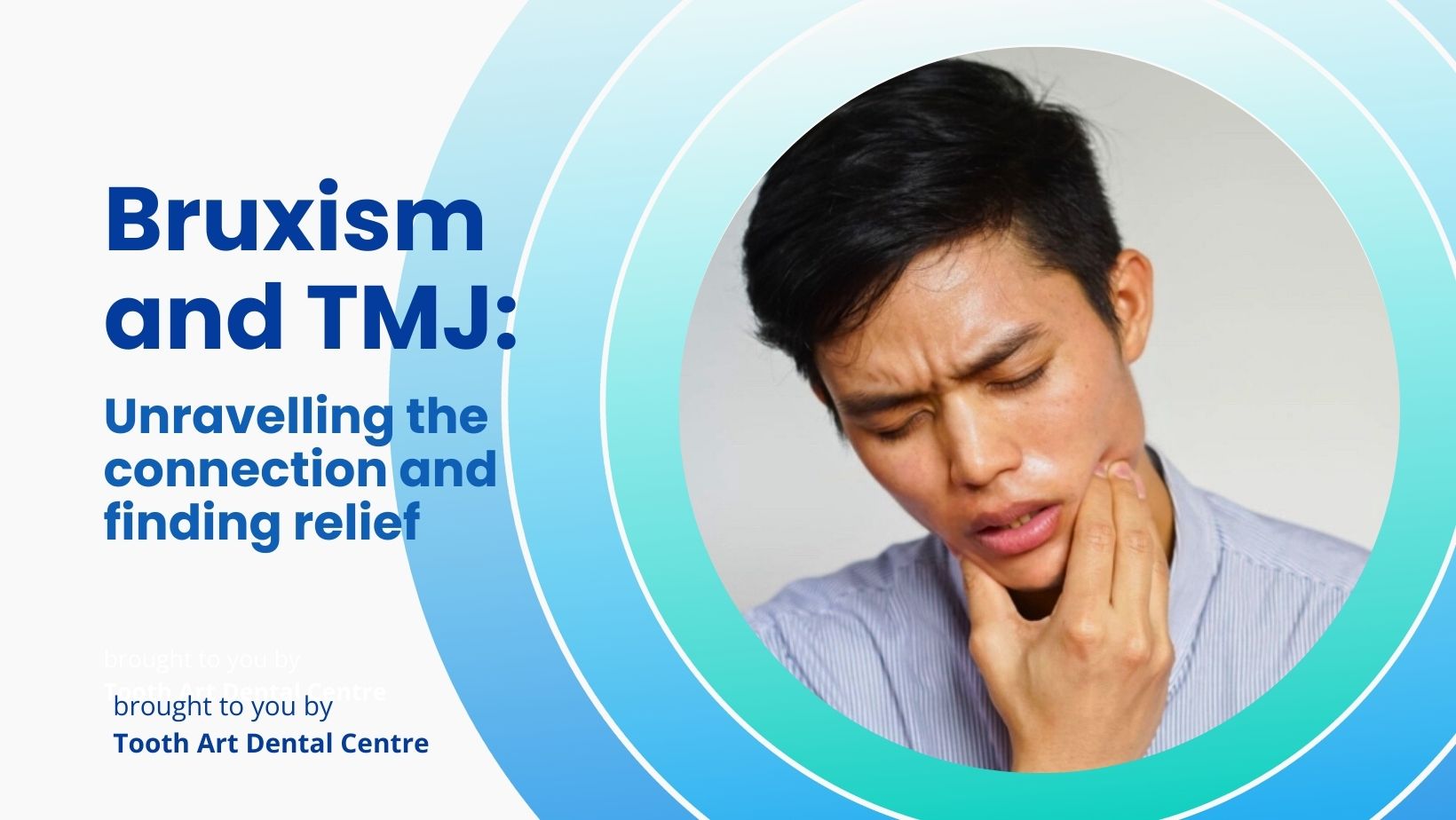Bruxism and TMJ: Unravelling the connection and finding relief
Have you experienced involuntary grinding of teeth or pain in the jaw? Bruxism and Temporomandibular Joint (TMJ) disorders are two interconnected oral health conditions that significantly impact the well-being and quality of life of many individuals. This comprehensive article delves into understanding the intricate relationship between these two conditions and offers insights into effective strategies for finding relief.
What is Bruxism?
Bruxism, commonly known as teeth grinding or clenching, is a condition where a person unconsciously grinds their teeth or clenches their jaw. This can occur both during the day and at night, with nocturnal bruxism being less detectable due to its occurrence during sleep. The primary concerns associated with bruxism are the wear and tear on teeth, potential tooth damage, and the strain it puts on jaw muscles and joints.
Understanding Temporomandibular Joint Disorders (TMJ Disorders)
On the other hand, TMJ disorders encompass a range of issues affecting the Temporomandibular Joint – the hinge that connects your jaw to the skull. TMJ disorders can manifest as pain in the jaw joint, difficulty in moving the jaw, and even an audible clicking or popping sound when opening or closing the mouth. These disorders can arise from various factors, including injury to the jaw, wear and tear due to aging, or arthritis.
The Bruxism-TMJ Connection
The relationship between bruxism and TMJ disorders is intricately linked and often cyclical. Bruxism can exacerbate TMJ disorders by placing additional strain on the jaw joint and the surrounding muscles. This excessive strain can lead to inflammation, pain, and worsening of TMJ symptoms. Conversely, a dysfunctional TMJ can contribute to the development of bruxism, as the body might unconsciously attempt to realign the jaw during sleep by grinding or clenching.
Trigger Factors
Understanding the triggers for both conditions is crucial for effective management. Stress and anxiety are common underlying psychological factors that can lead to both bruxism and TMJ disorders. Additionally, certain lifestyle habits, such as cracking nuts, gum-chewing or nail biting, can also contribute to the strain on the jaw joint and muscles.
Seeking Diagnosis
Accurate diagnosis is the first step towards effective treatment. This typically involves a thorough examination by a professional dentist or a TMJ specialist, who may use various diagnostic tools, such as X-rays, MRI, or CT scans, to evaluate the condition of the jaw joint and teeth.
Treatment Approaches
- Stress Management: Given the strong link between stress and these conditions, stress reduction techniques like meditation, yoga, or cognitive-behavioural therapy can be beneficial.
- Dental Interventions: For bruxism, a common recommendation is the use of a custom-fitted night guard. This oral appliance helps to cushion the teeth and reduce the stress on the jaw during the night.
- Physical Therapy: Engaging in targeted physical therapy can help strengthen and relax the jaw muscles, thereby alleviating TMJ pain and improving joint function.
- Medical Treatments: In more severe cases, medical interventions, such as pain relievers, muscle relaxants, or even Botox injections, can be used to relieve muscle tension and pain.
- Lifestyle Modifications: Simple changes in daily habits, such as avoiding gum-chewing, eating softer foods, or practising jaw relaxation exercises, can significantly impact symptom relief.
- Surgical Options: In rare and extreme cases where conservative treatments don’t provide relief, surgical options may be considered. These are typically reserved for severe TMJ disorders and are carried out by specialised surgeons.
Holistic and Long-Term Management
It’s imperative to approach the treatment of bruxism and TMJ disorders from a holistic standpoint. This includes not only addressing the immediate symptoms but also making lifestyle changes and psychological adjustments to prevent the recurrence of these conditions.
Conclusion
Bruxism and TMJ disorders, while challenging, are manageable with a comprehensive and multi-faceted approach. The key to effective management lies in identifying the triggers and symptoms and working closely with healthcare professionals to tailor a treatment plan suited to individual needs. With the right approach, individuals suffering from these conditions can find significant relief and improve their overall quality of life.
Have concerns about bruxism or TMJ? Schedule a consultation for a proper diagnosis and treatment plan.
Note: This article is intended for informational purposes only and does not substitute for professional medical advice. Individuals experiencing health concerns should consult with healthcare professionals for proper diagnosis and treatment plans.







